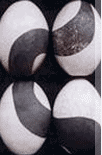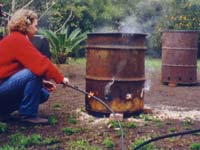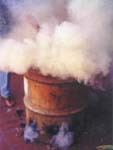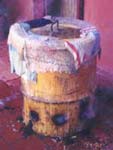After working with
the Raku technique of reduction I became interested in what is known as Pit
firing, and was able to take part in some of these firings. My problem was that
this technique was difficult, living as I did in the heart of the city, unable
to dig a hole in the ground. I was lucky that Professor Yehuda Koren very
generously solved my problem by teaching me the “bin firing”, which
for me was as useful as the “hole”.
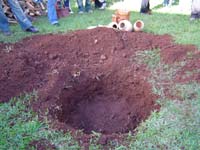 |
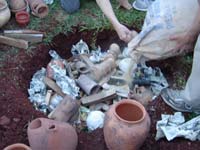 |
Hole
|
Hole Charging
|
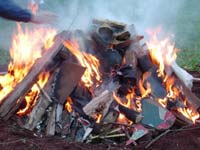 |
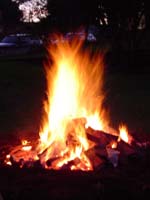 |
Firing Begining
|
Firing
|
This is a simple technique. The object is to achieve the reduction with metallic
salts and oxides without glaze, thus obtaining rustic finishes or surfaces, at
the same time very colourful in red, orange, grey, and black tones.
Once dry, the shaped and moulded pieces are biscuit, below 95ºC and
1000ºC to allow a good absorption of the salts. These are then dipped in
solutions of Iron Sulphate, Copper Sulphate and Borax, then dried, fundamental
as no dampness must remain, which would wet the sawdust or wood used.
|
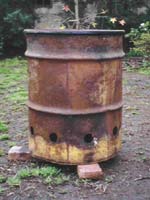 |
| Bin Firing |
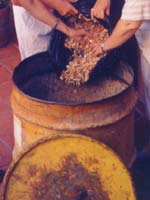 |
| Wood Charge |
|
If only black or white is required, the pieces will not be submerged
in the above-mentioned solution, and will be placed in the bin on their own. To
avoid any mix-ups, I use two bins, one for the pieces with salts and another to
obtain the whites and blacks.
To make the kiln a bin or tub is used, cutting off one of the ends, which is
used as a lid. Holes are drilled in the lower part allowing air to circulate
and to light it. It is filled as far as the air holes and the pieces to be
filled and small pieces of wood mixed with Borax, again wood and pottery pieces
subsequently until finished. The space is covered with wood, sawdust and lit at
the top and bottom. During the firing, damp clothes can be placed around to
cover and prevent excessive smoke, to avoid contamination as we are in an urban
atmosphere.
Once finished, the pieces are removed and washed. This is a simple and quick
technique and I hope that this way of firing will help other urban ceramists to
take courage and try it.
|
|
